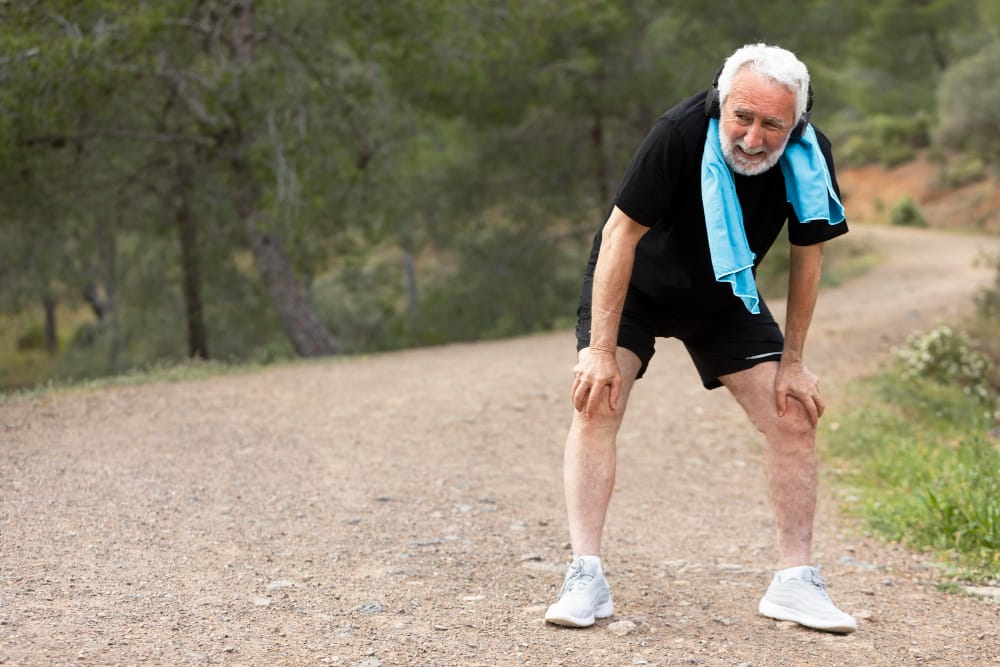FREE SHIPPING OVER $50
Stop These 9 Exercises Now if You’re Over 50 and Want to Stay Young
Staying active is one of the best ways to maintain your youth, energy, and overall health as you age. However, not all exercises are created equal—especially after 50. While some workouts can keep you strong and agile, others may put unnecessary strain on your joints, increase your risk of injury, or even accelerate wear and tear. If you’re over 50 and want to stay young, it’s time to rethink your fitness routine. Here are 9 exercises you should stop doing now, along with safer alternatives to keep you in top shape.
Why Exercise Choices Matter After 50

As we age, our bodies undergo natural changes that affect how we move and recover. Muscle mass decreases, joints become less flexible, and recovery takes longer. While exercise is crucial for combating these changes, certain high-impact or high-risk movements can do more harm than good. The key is to focus on exercises that build strength, improve mobility, and protect your joints—without compromising your long-term health.
Let’s dive into the 9 exercises you should avoid after 50 and what you can do instead.
Exercises To Avoid After 50
1. Heavy Bench Press: Swap for Dumbbell Chest Press
Why to Avoid: The heavy bench press places significant stress on your shoulders, elbows, and lower back. Over time, this can lead to joint pain or even injury, especially if your form isn’t perfect.
What to Do Instead: Opt for a dumbbell chest press. This variation allows for a greater range of motion, reduces strain on your joints, and engages stabilizing muscles. Plus, you can easily adjust the weight to suit your strength level.
2. Sit-Ups: Swap for Planks
Why to Avoid: Sit-ups can put excessive pressure on your lower back and spine, which is particularly risky if you have existing back issues. They also engage the hip flexors more than the core, leading to imbalances.
What to Do Instead: Planks are a safer and more effective way to strengthen your core. They engage your entire midsection without straining your back. Start with short holds (10-20 seconds) and gradually increase as you build endurance.
3. Deep Squats: Swap for Chair Squats
Why to Avoid: Deep squats can place excessive strain on your knees and lower back, especially if you have limited mobility or joint issues. Poor form can exacerbate these problems.
What to Do Instead: Chair squats are a gentler alternative. Stand in front of a chair, lower yourself until you lightly touch the seat, then stand back up. This reduces knee strain while still building leg strength.
4. Upright Rows: Swap for Lateral Raises
Why to Avoid: Upright rows involve pulling weights vertically, which can compress the shoulder joints and lead to impingement or rotator cuff injuries.
What to Do Instead: Lateral raises are a safer way to target your shoulders. Hold light dumbbells at your sides and lift them out to shoulder height. This minimizes joint stress while still working the deltoids.
5. Leg Press Machine: Swap for Bodyweight Lunges
Why to Avoid: The leg press machine can place excessive strain on your knees and lower back, especially if you’re using heavy weights. It also limits your range of motion, which can lead to muscle imbalances.
What to Do Instead: Bodyweight lunges are a functional alternative that strengthens your legs and improves balance. Step forward with one leg, lower your hips until both knees are bent at 90 degrees, then push back to the starting position.
6. Behind-the-Neck Lat Pulldowns: Swap for Front Lat Pulldowns
Why to Avoid: Behind-the-neck lat pulldowns force your shoulders into an unnatural position, increasing the risk of rotator cuff injuries and neck strain.
What to Do Instead: Front lat pulldowns are a safer option. Pull the bar down in front of your chest, keeping your shoulders and neck in a neutral position. This still targets your back muscles without compromising joint health.
7. High-Impact Running: Swap for Walking or Cycling
Why to Avoid: High-impact running can be tough on your knees, hips, and ankles, especially if you have joint issues or arthritis. The repetitive impact can accelerate wear and tear.
What to Do Instead: Low-impact cardio options like walking, cycling, or using an elliptical machine are gentler on your joints while still providing an excellent cardiovascular workout.
8. Overhead Shoulder Press: Swap for Arnold Press
Why to Avoid: The traditional overhead shoulder press can strain your neck, shoulders, and lower back, particularly if you have limited mobility or pre-existing issues.
What to Do Instead: The Arnold press is a safer variation. Start with dumbbells at shoulder height, palms facing you. As you press upward, rotate your palms to face forward. This reduces joint strain while still targeting your shoulders.
9. Burpees: Swap for Step-Back Burpees
Why to Avoid: Burpees are a high-intensity, full-body exercise that can be hard on your joints, especially your knees and wrists. The explosive nature of the movement also increases the risk of injury.
What to Do Instead: Step-back burpees are a modified version that reduces impact. Instead of jumping your feet back, step them back one at a time. This keeps your heart rate up without the strain.
Bonus Tips for Staying Fit After 50
While avoiding these exercises is a great start, there are a few additional tips to keep in mind as you navigate fitness after 50:
- Warm Up Properly: Spend 5-10 minutes warming up before every workout to prepare your muscles and joints.
- Focus on Mobility: Incorporate stretching or yoga into your routine to maintain flexibility and prevent stiffness.
- Listen to Your Body: If something feels off or painful, stop immediately and consult a professional.
- Stay Consistent: Aim for at least 150 minutes of moderate-intensity exercise per week, as recommended by health guidelines.
- Hydrate and Recover: Drink plenty of water and prioritize rest days to allow your body to recover.
Conclusion
Staying active after 50 is one of the best things you can do for your health, but it’s important to choose exercises that support your body rather than strain it. By avoiding these 9 high-risk movements and opting for safer alternatives, you can protect your joints, prevent injuries, and stay youthful for years to come. Remember, fitness is a lifelong journey—make it a sustainable one!
Related Articles
- At 65, He Rebuilt His Muscles with This Simple Nighttime Trick
- A Physical Therapist’s Top Resistance Band Exercises to Stop Joint Pain in Its Tracks
- Loosen Tight Hips Fast: A Personal Trainer’s Flexibility Secret Revealed
- This Posture Hack Fixes Shoulder Tension in Just 60 Seconds, According to a Physical Therapist
- Soothe Your Aching Back: 5 Yoga Poses You Need to Try Today



